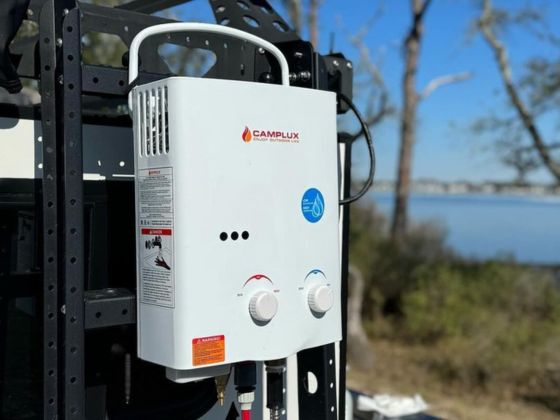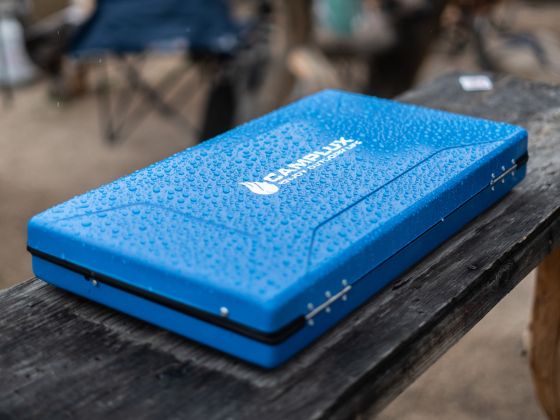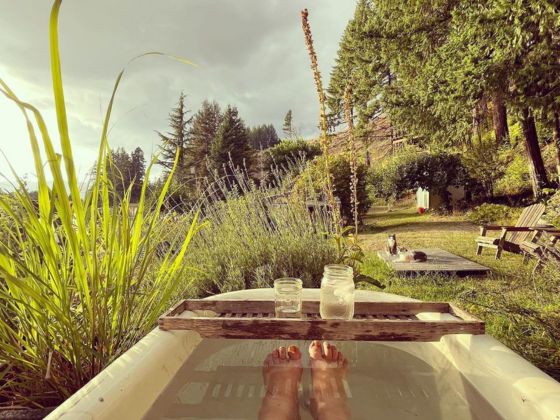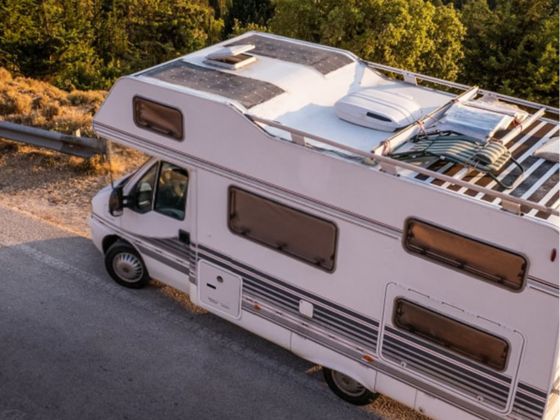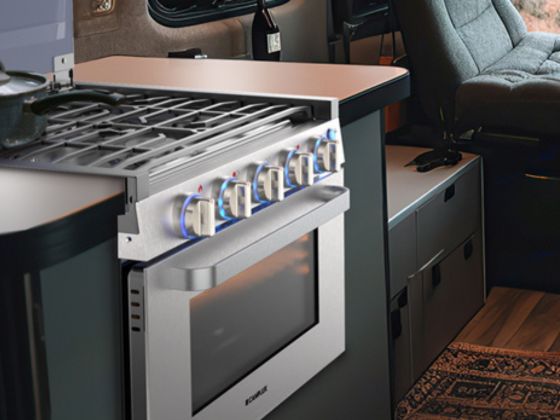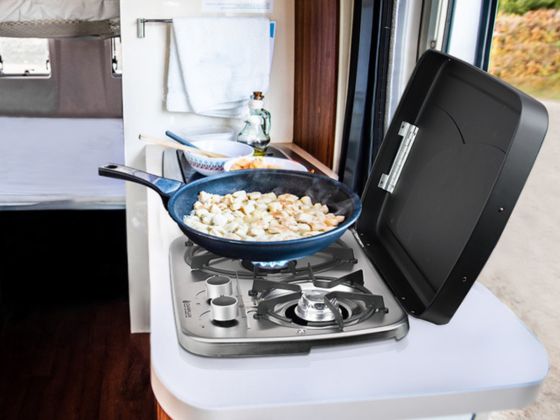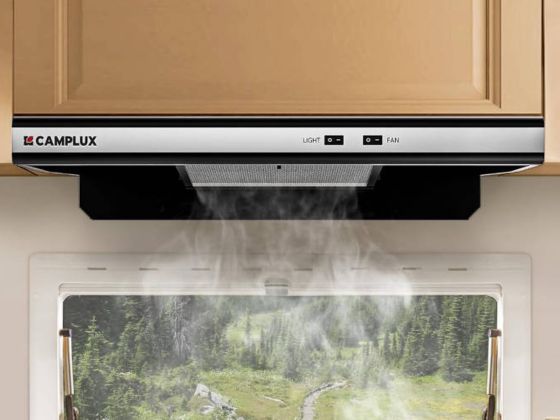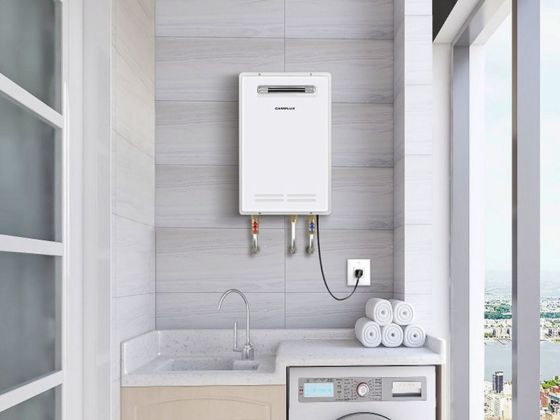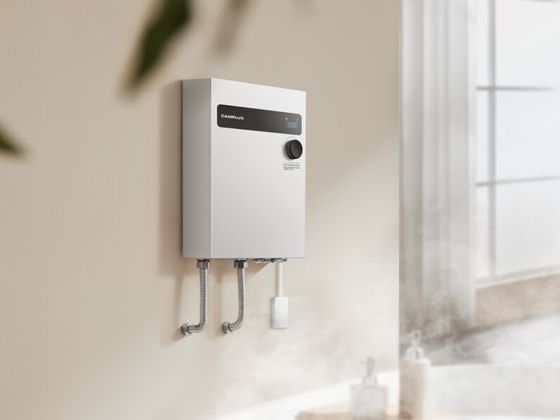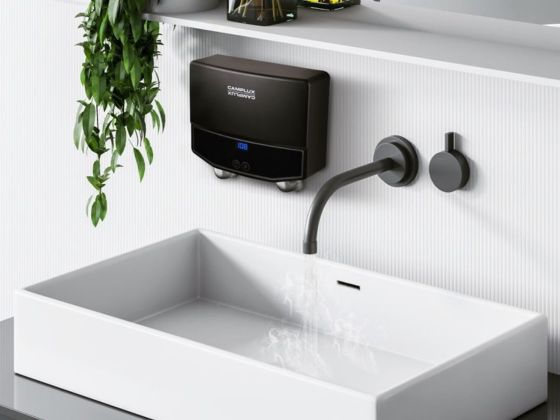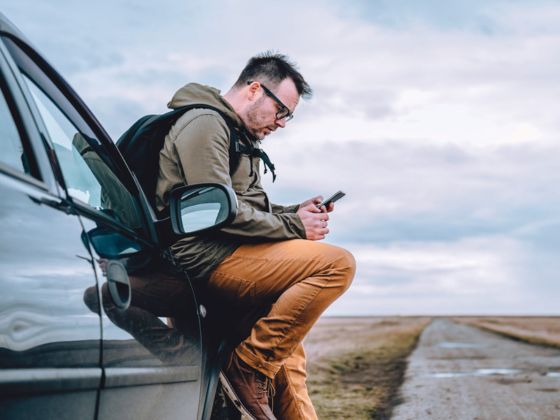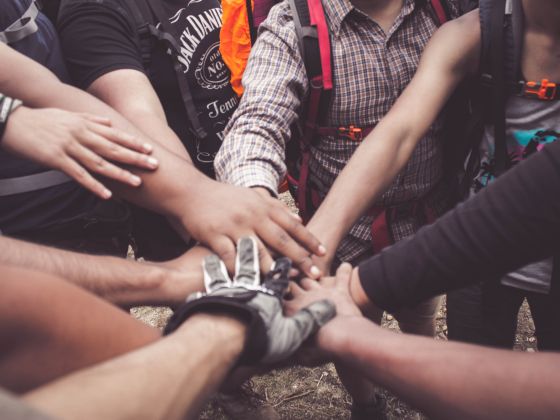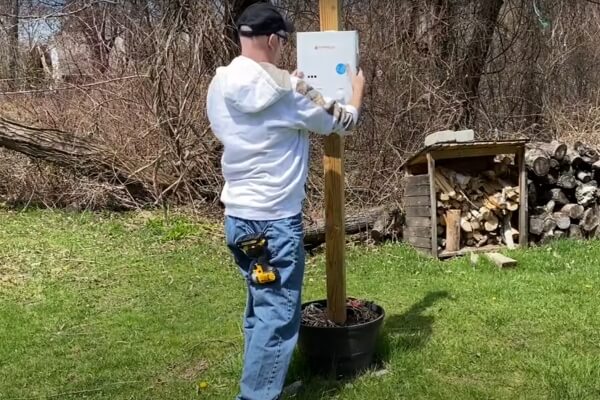Winter is here – but that’s no reason to stow your camping gear until next season.
With the right winter camping gear and a little bit of know-how, camping in the winter is actually a whole lot of fun for the entire family.
Here are the best winter camping tips to make the most of your next cold weather camping trip!
Why Go Winter Camping?

There’s no denying that camping in the winter can be cold and wet, especially if you live in an area with harsh winter weather.
But it’s these cold, wet conditions that can actually make winter camping so much fun. That winter weather you’re worried about drives off other campers. Chances are you’ll have the whole campground to yourself!
Winter Car Camping
First time winter campers should stick to car camping.
A car enables you to pack along as much gear as you like. You won’t have to worry about weight limitations. So, load up on even more heavy blankets and warmer clothing than you think you’ll need.
Winter Backpacking
You’re unlikely to see crowds while winter car camping – but you can truly get away from everything else by backpacking in the winter.
A winter backpacking trip is an excellent way to explore the great outdoors. In addition to the lack of other people, you’ll experience pristine snowy landscapes, untouched by anyone else.Of course, winter backpacking requires a little more preparation than winter car camping.
What to Wear While Winter Camping

Never go cold weather camping without the right winter camping gear.
The right winter clothing makes a huge difference in how warm and dry you stay. It also helps you avoid frostbite and hypothermia.
-
Avoid clothes made of cotton and go for synthetic or merino wool base layers instead. Wool is an excellent material that keeps you warm and traps heat, which makes it a great choice for damp conditions.
-
Wear waterproof boots that have soles with solid traction for snowy trails.
-
Hand and toe warmers are excellent ways to keep fingers and feet warm.
Making Camp in the Snow

Winter camping often involves camping on the snow.
Other key differences from summertime camping are dealing with the cold temperatures and the potential for high winds.
With these factors in mind, it’s important to select a campsite that’s naturally guarded from the weather. In particular, look for a campsite with natural wind protection.
At the same time, keep an eye out for any potential dangers. The most hazardous are trees with limbs that are damaged or could otherwise fall.
Another common winter camping danger, especially while camping in the mountains, are avalanches. Even if you’re not camping in the backcountry, don’t camp near a snowy slope with slide potential.
Set up your tent on a flat area free of vegetation. If possible, select a bare patch of ground without any snow. If you do set up your tent on snow, create a hard-packed platform first.
Remember to tend to your tent throughout the day and night. If it snows, remove heavy snow from the roof of your tent. If wind is in the forecast, use snow stakes to better secure your tent.
How to Stay Warm While Camping in Winter

Aside from warm, waterproof winter clothing layers, a quality winter tent and cold weather sleeping bag are the two other most important pieces of winter camping gear.
A sleeping pad doesn’t just make winter camping more comfortable, it also provides an extra layer of insulation between you and the cold ground. Some winter campers and backpackers prefer to bring two sleeping pads (usually a self-inflating air mattress and a closed-cell foam pad) instead.
Other ideas for how to stay warm while cold weather camping include eating a high-calorie nighttime snack, exercising before bed (jumping jacks), using hand warmers or a hot water bottle to heat up your sleeping bag, or simply wearing extra clothing to sleep.
How to Start a Campfire in the Snow

Rain, snow, and wind make starting a campfire even more difficult than normal. But, if you’re like me, a campfire is one of the best things about camping, especially if you’re camping with children. It just doesn’t feel like camping without one.
Here’s how to build a campfire in the snow:
- Come prepared with fire starters, wood, paper and an extra lighter.
-
Make sure to bring enough wood – don’t underestimate how cold it can get during the winter! Since winter is the off-season at many campgrounds, services can be limited in some parks so there may not be wood for sale. Some parks sell wood at their visitor centres since it’s forbidden to gather wood in most parks.
-
If your campsite is far away from the parking area or trailhead, bring a sled to drag in your wood and supplies.
-
Dig a hole in the snow to help keep your fire from collapsing when the snow melts. Using a fire pan is a good alternative.
Your Winter Camping Kitchen
You might think preparing delicious camping meals is more difficult in the winter – but that’s not always the case. Although rain, snow, and wind are certainly difficult to work around, it’s actually not all that difficult to cook in the snow.
Here are the basics you need to know about camp cooking in winter:
- Camping Stove – A quality cook stove goes a long ways towards your winter camping cooking efforts. Although a backpacking stove saves weight, a camping stove is best for cooking for the entire family. The Camplux Camping Stove,Burners,Griddles is one of our all time favorite camp stoves.

- Kitchen Shelter – A pop-up canopy or tent shelter will help protect your from the elements while cooking camping meals outside.
- Campfire – Another option is to cook your meals over the campfire. Our Dutch oven camping recipes are among my very favorite to cook up on the campfire on a cold winter day.
- Snow Kitchen – Another fun idea is to build a snow kitchen. You can mold these from heavy snow to form countertops, benches, and platforms for your cook stove and utensils. Use a metal stove plate under your cook stove and a piece of closed cell foam on each bench to minimize melting.
Stay Safe While Winter Camping

Safety is paramount on any camping trip – but camping in the winter throws additional dangers into the mix. Stay safe by remembering these winter camping safety tips:
- Food Storage – Follow all food storage guidelines for your local area to minimize the risk of wildlife encounters. In particular, be bear aware. Properly store all food (and scented items) in a hard-sided vehicle, suspended bear bag, or bear canister. Although it’s tempting to cook inside your tent in the winter, remember that the odor will remain, potentially attracting wildlife.
- Carbon Monoxide – Winter camping often necessitates the use of tent heaters, cook stoves, and other devices that produces carbon monoxide. Never use any of these devices in a confined space (like a tent) without proper ventilation (door completely open). That said, the Center for Disease Control states that it’s unwise to use any fuel burning device inside a tent (or similar enclosed space).
- Frostbite & Hypothermia – Frostbite and hypothermia are two major dangers when snow camping in winter. The key to avoiding both is staying warm and dry. Protect your extremities (hands and feet) by wearing thick gloves and socks. Also, make sure to keep your inner body temperature up. Know that if your winter camping gear gets wet, it will freeze quickly. You must avoid getting overly warm to minimize sweating. Moisture wicking clothing helps big time.
- Tree Branches – Learn how to identify hazard trees – and never set up camp underneath them. Although hazard trees are dangerous at any time of the year, the U.S. Forest Service says they’re particularly dangerous in winter.
- Avalanche Safety – Learn how to identify avalanche danger by gauging the terrain, weather, snowpack, and human factors to spot potential hazards before they develop. This is a difficult skill to learn on your own. We recommend taking an avalanche safety training course to learn from an expert. You’ll learn avalanche safety protocol, including how to rescue someone buried in an avalanche.
- Weather Conditions – You must always keep an eye on the weather when camping, but doing so is even more important for winter camping. Never go outside your comfort zone. If the forecast predicts a storm or weather outside your experience level, reschedule your trip for a different time (or pack your camp up and head out if you’re already in the field).
- Detailed Plan – Never head out on a camping trip without letting someone know where you’re going. For winter camping, leave a detailed camping plan with a close friend, family member, or even the local ranger station. If a problem does arise, you want someone to not only know that you’re gone, but also where to look.
Other Winter Camping Tips

By now, you should have a solid idea of what it takes to plan an enjoyable cold weather camping trip. But more information is never a bad thing. No matter the specifics of your trip, these additional winter camping tips are useful:
- Eat Simple, Calorie-Dense Food – You’ll burn even more energy than normal while camping in winter. Not only will you need more food than normal, but calorie-dense meals are essential. One-pot meals work well as they require minimal cleanup afterwards.
- Don’t Forget Water – Even though you might not be thirsty, it’s essential to drink water on a regular basis. Hydration is incredibly important while winter camping. It can actually cause your body temperature to drop. You can either pack in all of your water or melt down snow for drinking water.
- The Ten Essentials – Never take a camping trip, especially a winter camping trip, without the ten essentials. These survival items are pivotal to dealing with any accidents or emergencies that might come up.
- Don’t Tough It Out – Be cautious about getting too cold. Don’t be afraid to bail if you do feel yourself getting too cold (and failing to warm back up). Same goes for sudden storms. If you’re in over your head, then head back home (as conditions allow). You can take another winter camping trip later.
- Fill Floor Space – One person sleeping alone in a large tent isn’t very efficient. All that extra floorspace lets heat escape and cold enter. Fill the empty floor space with your backpack, boots, jacket, and other gear for extra insulation from the cold ground.
- Stake Down Your Tent – Use normal tent stakes or “deadman” objects like logs and rocks to stake down your tent if you expect wind. Special winter tent stakes are necessary for camping in snow.
- Store Boots Inside – Keep your boots warm and dry by bringing them inside your tent at night. If your boots have removable liners, place these inside at the bottom of your sleeping bag at night.
- Know How to Pee (and Poop) – A pee bottle sure beats leaving the warmth of your sleeping bag in the middle of the night. For women, a female urination device (FUD) makes this easier. Number 2 is a little more difficult. You’ll likely want to leave your tent for that. Our guide to using the bathroom while camping will tell you more!
Final Thoughts

Winter camping is just camping (with a little more gear and preparation). Even though it might seem intimidating, it’s actually not too difficult. Plus, it’s a whole lot of fun for the whole family.
So instead of stowing your camping gear and cooping up all season, get aside and try camping in the winter for yourself!
